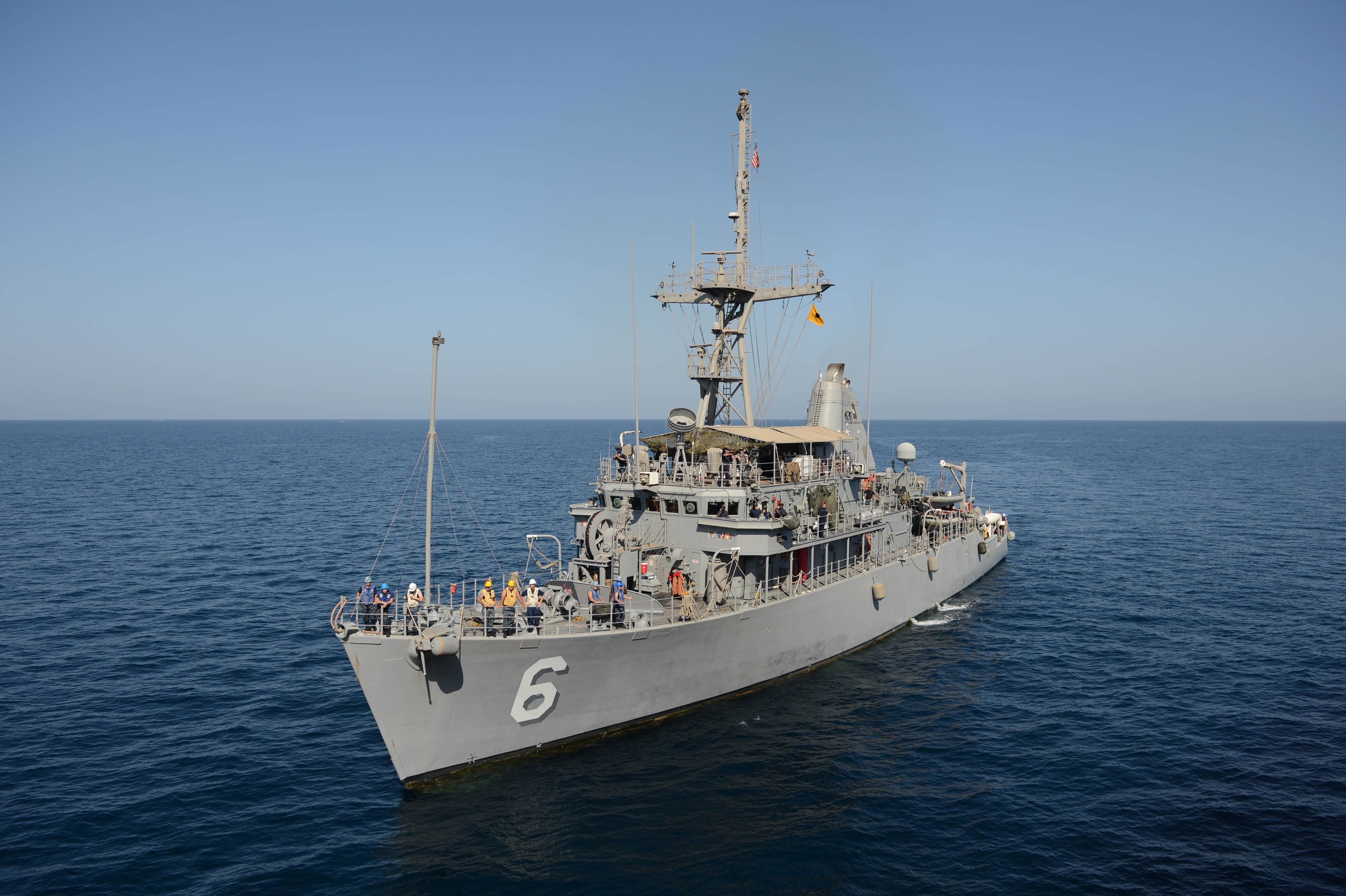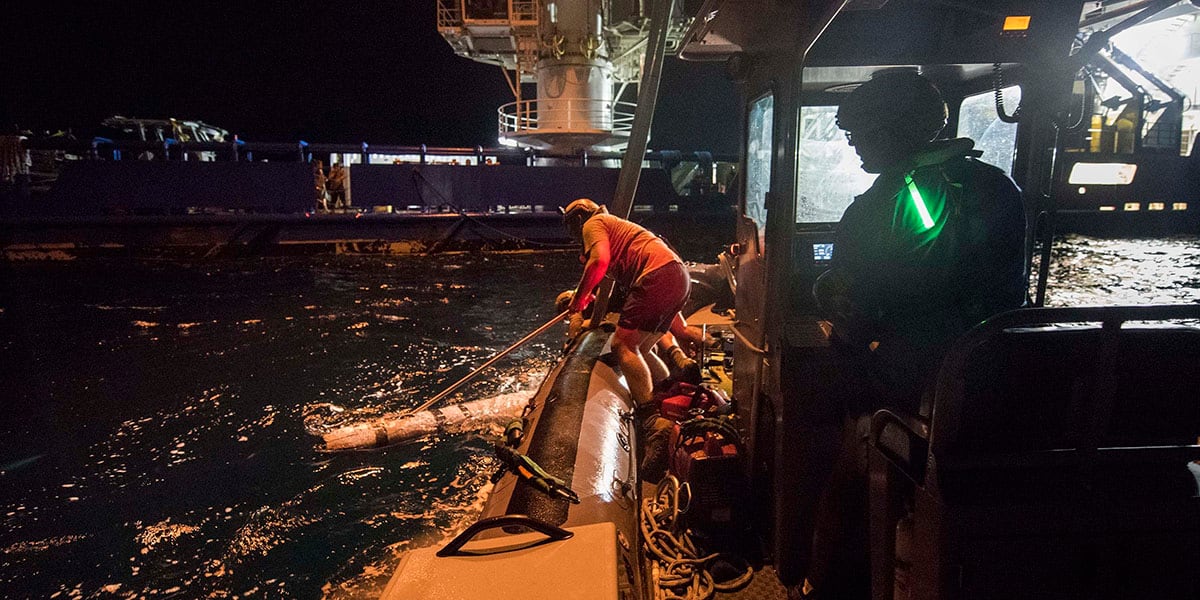NORFOLK — A British amphibious warship embarked with U.S. Navy sailors is slated to operate out of this Virginia port for what officials term a two-week “experiment” to test new mine warfare techniques.
The Royal Fleet Auxiliary Mounts Bay pulled into port on March 17 after sailing from the United Kingdom, a journey that included a pit stop in Aruba, according to British officials.
To American sailors, it looks like a landing ship dock. But in the Royal Navy, those sorts of vessels are controlled by the Royal Fleet Auxiliary, which is similar to U.S. Military Sealift Command.
“The U.S. Navy and Royal Navy have an enduring partnership, and mine countermeasures capabilities and technology are shared items of interest,” said Lt. Kristi Johnson, spokeswoman for the U.S. Navy’s Explosive Ordnance Disposal Group 2 at Joint Expeditionary Base Little Creek.
To her, the experiment “refines and advances the Navy explosive ordnance disposal community’s ability” to control a mine countermeasures task group.
RELATED

Johnson told Navy Times that the experiment will see if a task group can work off any “embarking vessels of opportunity” with sufficient capability to allow the use of “surface, air and expeditionary MCM forces” such as the Navy’s Expeditionary Mine Countermeasures Units.
That’s part of an emerging plan for future mine warfare missions as the Navy eyes the retirement of its aging Avenger-class mine countermeasures ships, none of which will be involved in this test.
Instead, Cmdr. Jon Haase, who helms Little Creek-based EOD Mobile Unit Two, will conduct the exercise from the Mounts Bay as the on-scene mine countermeasures commander when it kicks off , Johnson said.
Participating units will include one of Haase’s Expeditionary Mine Countermeasures Companies, plus Norfolk-based Helicopter Sea Combat Squadron’s 2 and 28 and minemen from Mine Warfare Detachment 22.
They’ll be assisted by sailors from Florida-based Littoral Combat Ship Squadron 2.
Together, they’ll run what Johnson called “the full spectrum of detect-to-engage sequencing, from locating to neutralizing simulated explosive threats.”
“The exercise will start later this week and end next week,” she said.

“This experiment is a very important readiness event not only for individual units participating but for the overall readiness of our entire task group operating off the coast of Virginia,” added Haase. “There is an increased sense of realism and urgency with operating real systems on a vessel of opportunity against simulated real world threats.”
Haase hopes that working alongside the Brits will provide vital experience on how to operate from an allied vessel in a future war against sea mines.
“We will have the opportunity to advance and refine our performance as an MCM task group since MCM is not built around a single platform or sensor; we combine the right sailors and tools to accomplish the mission," he said.
Haase’s mine hunters won’t be the first American team to work with the crew of the Royal Fleet Auxiliary Mounts Bay.
In a March 14 message delivered from their official Twitter account, British officials announced that they conducted a “very busy period” of successful counter-narcotics operations with the U.S. Coast Guard in the Caribbean.
Mark D. Faram is a former reporter for Navy Times. He was a senior writer covering personnel, cultural and historical issues. A nine-year active duty Navy veteran, Faram served from 1978 to 1987 as a Navy Diver and photographer.




